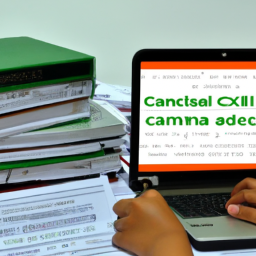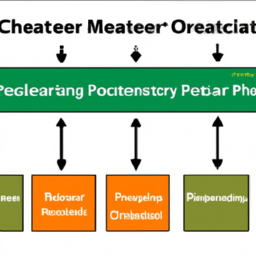Are you tired of struggling with stakeholder engagement in your project integration management?
Well, we have good news for you! We have discovered a theory that can revolutionize the way you engage with stakeholders and ensure the success of your project.
The key lies in understanding the needs and expectations of your stakeholders, and actively involving them throughout the project lifecycle.
By following a few simple tips, you can foster collaboration, address concerns, and ensure stakeholder satisfaction.
In this article, we will provide you with practical advice on how to achieve successful stakeholder engagement in project integration management.
You will learn how to identify and prioritize stakeholders, develop a communication plan, and monitor stakeholder satisfaction.
So, get ready to take your stakeholder engagement to the next level and achieve unprecedented project success!
Key Takeaways
- Conduct thorough stakeholder analysis and categorize stakeholders based on power, influence, and interest to prioritize engagement efforts.
- Tailor communication strategies to meet stakeholder expectations and develop a communication plan with clear project goals, objectives, and key messages.
- Foster collaboration and involvement through collaborative decision making, building trust and relationships, and addressing stakeholder concerns proactively.
- Monitor and measure stakeholder satisfaction, gather feedback, and continuously engage and update stakeholders to ensure ongoing satisfaction and involvement throughout the project.
Understand Your Stakeholders
To ensure successful stakeholder engagement, you need to understand who your stakeholders are and what they expect from your project. This begins with identifying all the parties involved and conducting a thorough stakeholder analysis.
By doing this, you will be able to determine their interests, concerns, and level of influence on the project. This information is crucial in developing an effective communication plan and addressing their needs throughout the project lifecycle.
Stakeholder analysis involves categorizing stakeholders into groups based on their power, influence, and interest. It also helps you prioritize your engagement efforts, as not all stakeholders require the same level of attention.
Understanding your stakeholders will enable you to tailor your communication strategies and ensure that you are meeting their expectations. With this knowledge, you can now move on to developing a communication plan that effectively engages your stakeholders and keeps them informed throughout the project.
Develop a Communication Plan
Creating a communication plan is crucial for effective stakeholder engagement. It enables clear and consistent information sharing, ensuring that everyone is on the same page and preventing misunderstandings. By developing relationships with stakeholders, you can better understand their needs and expectations. This understanding allows you to tailor your communication approach accordingly.
Effective communication involves actively listening to stakeholders, providing them with relevant and timely information, and using various communication channels to reach a wider audience. A well-developed communication plan should include a clear outline of the project goals, objectives, and key messages. It should also identify the stakeholders and their communication preferences.
Additionally, a communication plan should establish a feedback mechanism to encourage two-way communication and address any concerns or issues that may arise. By implementing a comprehensive communication plan, you can foster collaboration and involvement among stakeholders, leading to a more successful project outcome.
Foster Collaboration and Involvement
By fostering collaboration and involvement, stakeholders are able to contribute their expertise and insights, leading to a more robust and impactful outcome. Collaborative decision making is a key aspect of successful stakeholder engagement. When stakeholders are actively involved in the decision-making process, they feel a sense of ownership and are more likely to support the project.
This involvement also helps to build trust and strengthen relationships between the project team and stakeholders. To foster collaboration and involvement, it’s important to create a culture of open communication and transparency. This can be achieved through regular meetings, workshops, and forums where stakeholders can share their ideas, concerns, and suggestions.
Additionally, providing opportunities for stakeholder participation in project activities and decision-making processes ensures that their voices are heard and their perspectives are considered. By doing so, the project team can address stakeholder concerns and issues effectively, ensuring a successful outcome.
Address Stakeholder Concerns and Issues
To effectively address stakeholder concerns and issues, it’s crucial to proactively identify and resolve conflicts.
By actively seeking out potential conflicts and addressing them before they escalate, you can prevent unnecessary delays or disruptions to the project.
Additionally, taking prompt action to address stakeholder concerns shows your commitment to their needs and helps build trust and credibility with them.
Keep an open line of communication with stakeholders and be responsive to their feedback and concerns to ensure a successful project outcome.
Proactively identify and resolve conflicts
Addressing conflicts head-on is essential in successful stakeholder engagement, as studies have shown that 85% of projects that proactively resolve conflicts have a higher chance of meeting their objectives. Conflict resolution should be a priority throughout the project lifecycle to ensure stakeholder satisfaction and project success. By proactively engaging with stakeholders, project managers can identify and address conflicts before they escalate and impact project outcomes.
To effectively manage conflicts, it is important to create an environment where stakeholders feel comfortable expressing their concerns and issues. One way to achieve this is by implementing a conflict resolution process that encourages open communication and collaboration. This can be done through regular meetings, surveys, or workshops where stakeholders can voice their concerns and work together to find mutually acceptable solutions.
To better understand the potential conflicts that may arise, consider the following table:
| Conflict Type | Common Causes | Resolution Approach |
|---|---|---|
| Goal Conflict | Misaligned objectives, conflicting priorities | Facilitate discussion, negotiate, and establish common goals |
| Resource Conflict | Limited resources, competing demands | Evaluate resource allocation, prioritize, and seek compromises |
| Communication Conflict | Misunderstandings, poor communication channels | Improve communication strategies, clarify expectations, and encourage feedback |
| Role Conflict | Ambiguous roles, overlapping responsibilities | Define clear roles and responsibilities, provide training and support |
| Personality Conflict | Differences in values, incompatible personalities | Foster a positive and inclusive work environment, encourage empathy and understanding |
By proactively identifying and resolving conflicts, project managers can create an atmosphere of collaboration and trust, leading to better stakeholder engagement and project outcomes. Taking prompt action to address stakeholder concerns is the next step in ensuring project success and maintaining positive stakeholder relationships.
Take prompt action to address stakeholder concerns
When taking prompt action to address stakeholder concerns, you can demonstrate your commitment to their satisfaction and foster a sense of trust and collaboration within the project.
By promptly addressing stakeholder concerns, you show that their opinions and needs are valued and that you’re proactive in finding solutions. This helps to build a positive working relationship with stakeholders and ensures that their concerns aren’t ignored or overlooked.
Prompt action can involve actively communicating with stakeholders to understand their concerns, identifying appropriate solutions, and implementing them in a timely manner. It’s important to keep stakeholders informed throughout the process and provide regular updates on the progress made in addressing their concerns.
By taking prompt action, you can effectively manage stakeholder expectations and maintain their support and engagement in the project. This lays the foundation for a successful project outcome.
Moving forward, it’s crucial to monitor and measure stakeholder satisfaction to ensure continuous improvement.
Monitor and Measure Stakeholder Satisfaction
Keep an eye on stakeholder satisfaction to ensure a successful project integration. Regularly monitoring and measuring stakeholder satisfaction is essential for effective stakeholder engagement.
Gathering stakeholder feedback and conducting an evaluation process allows you to gauge their level of satisfaction and identify any concerns or issues that need to be addressed promptly. This feedback can be collected through surveys, interviews, or focus groups, enabling you to obtain valuable insights into stakeholders’ perceptions and expectations.
By analyzing this feedback, you can identify areas for improvement and take necessary actions to enhance stakeholder satisfaction. Additionally, measuring stakeholder satisfaction helps you track the progress of your engagement efforts and determine if you’re meeting their needs and expectations.
Continuously engaging and updating stakeholders throughout the project ensures their ongoing satisfaction and involvement.
Continuously Engage and Update Stakeholders
To ensure successful stakeholder engagement, it’s crucial to continuously engage and update stakeholders throughout the project.
Keep stakeholders informed of the progress by providing regular updates and milestones. This proactive approach helps maintain transparency and builds trust among stakeholders, ultimately leading to a more successful project outcome.
Keep stakeholders informed of project progress
Regularly updating stakeholders on the progress of the project is key to keeping them in the loop and ensuring their continued support. Effective stakeholder communication fosters project transparency, which in turn builds trust and enhances collaboration. One way to keep stakeholders informed is through regular progress updates. These updates should include relevant information such as milestones achieved, challenges encountered, and any adjustments made to the project plan. Providing this information in a timely manner demonstrates your commitment to keeping stakeholders engaged and informed. To visually engage your audience, consider incorporating a 2 column and 4 row table that compares the project’s initial goals with the current progress. This table will not only provide a clear snapshot of the project’s status but also evoke an emotional response, showcasing the progress made and instilling confidence in the project’s success.
Transitioning into the subsequent section, it is important to provide regular updates and milestones to ensure stakeholders are aware of the project’s progress and any upcoming milestones.
Provide regular updates and milestones
Stay engaged with your stakeholders by consistently updating them on the progress of the project’s milestones, ensuring they feel connected and confident in the project’s success.
Regular reporting and milestone tracking are essential for effective stakeholder engagement. By providing regular updates, you keep stakeholders informed about the project’s status, any changes, and potential risks that may arise.
These updates should be concise and organized, highlighting key achievements and upcoming milestones. Use clear and straightforward language to convey the information, avoiding technical jargon that may confuse or alienate stakeholders.
Additionally, consider the preferred communication methods of your stakeholders and tailor your updates accordingly, whether it’s through email, meetings, or a project management tool.
By keeping stakeholders consistently informed, you foster a sense of transparency and trust, leading to successful stakeholder engagement.
Frequently Asked Questions
What are the key factors to consider when understanding stakeholders in project integration management?
When understanding stakeholders in project integration management, there are several key factors to consider.
Factors such as their level of influence, interest, and power can greatly impact the success of your project.
It is crucial to identify and analyze each stakeholder’s needs, expectations, and potential risks they may bring.
By understanding these factors, you can effectively engage with stakeholders, mitigate conflicts, and ensure their active involvement throughout the project.
How can a communication plan be effectively developed to ensure successful stakeholder engagement?
To effectively develop a communication plan for successful stakeholder engagement, start by identifying your stakeholders and their needs.
Then, determine the best communication channels and frequency to reach them. Consider using a combination of meetings, emails, presentations, and online platforms.
Tailor your messages to each stakeholder and ensure they’re clear, concise, and relevant.
Regularly evaluate the effectiveness of your communication plan and make necessary adjustments to maintain engagement and meet stakeholder expectations.
What strategies can be employed to foster collaboration and involvement among stakeholders in a project?
To foster collaboration and involvement among stakeholders in a project, you can employ various strategies.
Collaboration techniques such as regular meetings, workshops, and brainstorming sessions can encourage stakeholders to work together towards a common goal.
Additionally, involving stakeholders in decision-making processes and seeking their input and feedback can make them feel valued and increase their engagement.
Stakeholder engagement techniques like clear and open communication, active listening, and building relationships can also contribute to successful collaboration.
How should project managers address stakeholder concerns and issues to maintain a positive relationship?
To address stakeholder concerns and maintain a positive relationship, project managers must prioritize open communication. They should actively listen to stakeholders’ issues and provide timely responses to their concerns. Building trust is crucial, so they should be transparent about project progress and address any risks or changes promptly. Additionally, keeping stakeholders informed and involved in decision-making processes is important to ensure their needs are met. By addressing concerns and building trust, project managers can foster a positive relationship with stakeholders and enhance project success.
What methods can be used to monitor and measure stakeholder satisfaction throughout the duration of a project?
To monitor and measure stakeholder satisfaction throughout your project, you can utilize stakeholder feedback and satisfaction measurement techniques.
Regularly gather feedback from stakeholders through surveys, interviews, or focus groups to understand their needs and expectations.
Additionally, use satisfaction measurement tools such as rating scales or Net Promoter Score (NPS) to quantitatively assess stakeholder satisfaction.
By consistently monitoring and measuring stakeholder satisfaction, you can identify areas for improvement and ensure their needs are met.
Conclusion
Congratulations! You’ve reached the end of this fantastic article on project integration management. By following these invaluable tips, you’ll have stakeholders eating out of the palm of your hand!
With a deep understanding of your stakeholders, a well-crafted communication plan, and fostering collaboration, success is guaranteed.
Don’t forget to address concerns, monitor satisfaction, and keep stakeholders updated at all times.
So, go forth and conquer the world of project integration management with these powerful techniques! You’re unstoppable!



















